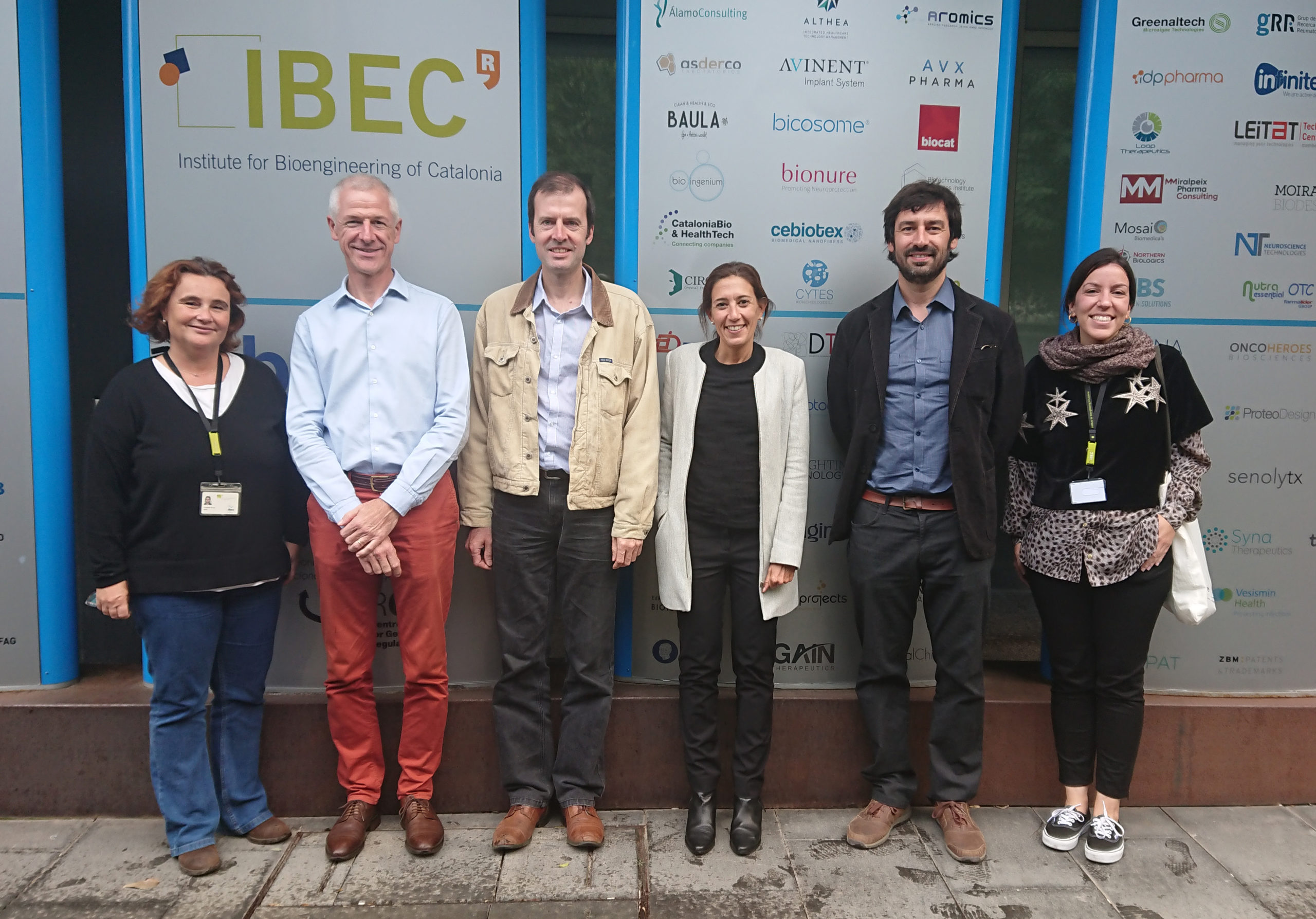Elisabeth Engel, principal investigator of the “Biomaterials for regenerative therapies” group at IBEC will coordinate a three-year project with the aim of boosting skin self-regeneration. This transnational European consortium composed of four more partners will develop the project over the next 3 years, including Dimitrios Zeugolis (University of Ioannina, Greece), Joan Pere Barret (Hospital Universitari Vall d’Hebron, Spain), Olivier Stephan (Université Grenoble-Alpes, France) and Denis Barbier (MicroLight 3D, France).
The project falls under the scope of EuroNanoMed3 programme, and the consortium will receive a total of 747.000 € through the corresponding national funding agencies of the countries involved. In particular, the “Agencia Estatal de Investigación” (Ministerio de Ciencia, Innovación y Universidades) will fund IBEC’s contribution with 190.000 €.
Under the name of « nAngioDerm – Ion-release materials to promote Angiogenesis on DERMal regeneration » the project will focus on skin regeneration, specifically in regenerating the tissue of chronic wounds and skin burns. To reach that end, they will use nanoparticles and 3D printing to promote self-regeneration of the damaged tissues. The nAngioDerm project seeks to address the global burden of skin and subcutaneous diseases. Since 2009, it is said that such ailments affect up to 20 million people living with acute wounds, as a result of surgery or chronic skin ulcers.
nAngioDerm’s innovative approach is based on the controlled release of bioactive ions from biodegradable polymeric nanocarriers. These bioactive ions will promote cell recruitment and colonisation and provide an antibacterial effect that will facilitate reepithelisation, and therefore, wound healing. Depending on the type of skin injury, the ion-releasing nanocarriers will be combined with 3D printed collagen-based scaffolds or dispersed in a spray or microgels.
More specifically, IBEC will explore bioactive ions of biodegradable polymeric nanocarriers. This will lead to the creation of nanostructured devices that could promote in situ regeneration of damaged skin so that it wouldn’t be necessary to use growth factors for instance.
The kick-off meeting took place at IBEC facilities on the 31st October with the presence of Elisabeth Engel, Óscar Castaño, Soledad Pérez, Célia Ximenes and Sara Vicente from IBEC, Denis Barbier and Michel Bouriau from MicroLight 3D, Joan-Pere Barret from Hospital Universitari Vall d’Hebron and Dimitrios Zeugolis from University of Ioannina via conference call.
